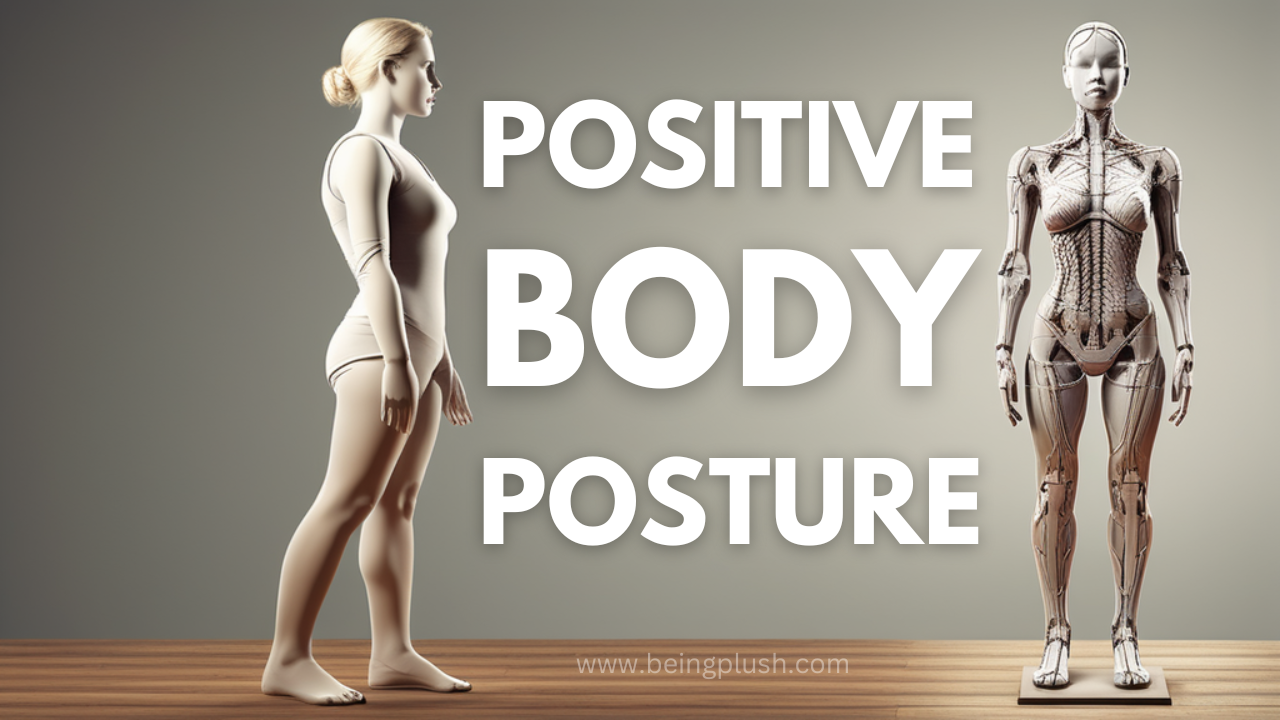Cultivating a positive body posture is crucial for both physical health and mental attitude in a society where posture plays a crucial role in conveying confidence and well-being. We’ll go over the importance of good posture, how it affects general health, and offer a step-by-step method to help you develop and keep a self-assured, healthful stance in this extensive tutorial.
Understanding Positive Body Posture

1. What is positive body posture?
The alignment and placement of the body to support the best possible physical and mental health is referred to as positive body posture. It entails keeping an erect, balanced posture that reduces strain on joints and muscles and conveys assurance and confidence.
2. Importance of Positive Body Posture
- Physical Well-being: Maintaining a positive body posture contributes to proper spinal alignment, reducing the risk of musculoskeletal issues such as back pain, neck pain, and headaches.
- Mental Health: Research suggests a strong connection between body posture and mental well-being. Adopting a positive stance can enhance mood, reduce stress, and boost confidence.
Guide to Positive Body Posture

1. Stand Tall with Core Engagement
- Feet: Stand with your feet hip-width apart. Ensure your weight is evenly distributed between both feet.
- Core: Engage your core muscles by gently pulling your navel towards your spine. This action provides stability to your spine and promotes a more upright posture.
2. Align Your Head and Neck
- Head: Keep your head in a neutral position, aligning it with your spine. Avoid tilting your head forward or backward.
- Neck: Relax your neck and avoid unnecessary tension. Imagine your head being pulled upward by an invisible string.
3. Shoulders Back and Down
- Shoulders: Roll your shoulders back and down, opening up your chest. Avoid slouching or rounding your shoulders forward.
- Arms: Allow your arms to hang naturally by your sides. Keep them relaxed and avoid excessive tension in your shoulders.
4. Maintain a Neutral Pelvis
- Pelvis: Keep your pelvis in a neutral position, neither tilting too far forward nor backward. This helps maintain the natural curves of your spine.
- Hips: Ensure your hips are level and facing forward. Avoid jutting one hip out to the side.
5. Distribute Weight Evenly
- Feet: Check that your weight is evenly distributed between the balls and heels of your feet. Avoid leaning excessively to one side.
- Knees: Keep your knees slightly bent and facing forward. Locking your knees can lead to stiffness and discomfort.
6. Mindful Walking
- Stride: When walking, take purposeful and controlled strides. Maintain the same principles of alignment as when standing.
- Arms: Allow your arms to swing naturally with your stride. Keep them relaxed, and avoid excessive tension.
Tips for Incorporating Positive Body Posture Into Daily Life

1. Desk Posture
- Chair Setup: Adjust your chair to maintain a 90-degree angle at your hips and knees. Keep your feet flat on the floor.
- Monitor Position: Position your computer monitor at eye level to avoid tilting your head up or down. Place the keyboard and mouse within easy reach.
2. Phone Use
- Eye Level: Hold your phone at eye level to avoid tilting your head forward. Consider using a hands-free device for prolonged conversations.
- Take Breaks: If using your phone for an extended period, take breaks to stretch and reset your posture.
3. Mindful Sitting
- Back Support: Use a chair with proper back support, and consider adding a small cushion for lumbar support.
- Feet on the Ground: Keep your feet flat on the ground, and avoid crossing your legs for extended periods.
4. Regular Stretching and Strengthening Exercises
- Stretching: Incorporate stretching exercises that target muscles prone to tension, such as the neck, shoulders, and lower back.
- Strengthening: Include strength training exercises that focus on core muscles, back muscles, and those supporting good posture.
Resources for Further Guidance

1. Yoga and Pilates Classes
- Consider joining yoga or Pilates classes, both of which emphasize body awareness, core strength, and posture improvement.
2. Posture-Correcting Devices
- Explore posture-correcting devices, such as ergonomic chairs, lumbar rolls, or wearable devices designed to provide real-time feedback on your posture.
Summery
In summary, practicing proper body posture can have transforming effects that extend beyond one’s outward appearance. It is a comprehensive method of well-being that has advantages for the body and mind. You can develop a self-assured and healthy stance by applying the step-by-step approach to your everyday tasks and paying attention to your posture. Recall that maintaining good posture is a continuous process that will improve your general health with little but steady effort. Accept the power of proper posture and assume a confident, tall stance.


